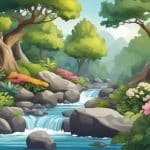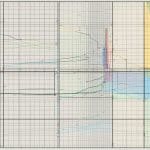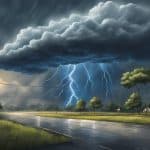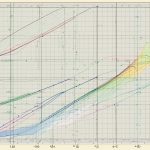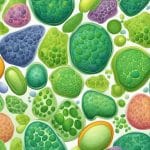Types Of Landforms
Landforms are natural features that shape the planet’s surface. They can be found all across the Earth and encompass a wide range of shapes, sizes, and formations. Landforms are the result of various geological processes and can be categorized by characteristic physical attributes such as their creating process, shape, elevation, slope, orientation, rock exposure, and soil type. Understanding the different types of landforms is essential for geologists, geographers, and other scientists who study the Earth.
There are several fundamental types of landforms, including mountains, hills, plateaus, and plains. These landforms are created by tectonic plate movement under the Earth’s surface, which can push up mountains and hills. Erosion and water action can also shape the Earth’s surface, resulting in landforms such as canyons, valleys, and basins. Aquatic landforms, such as oceans, rivers, and lakes, are formed by the movement and deposition of water. Tectonic landforms, such as volcanoes and rift valleys, are created by the movement of tectonic plates. Finally, human-interacted landforms, such as cities and roads, are created by human activity and can have a significant impact on the planet’s surface.
Key Takeaways
- Landforms are natural features that shape the Earth’s surface and can be categorized by various physical attributes.
- There are several fundamental types of landforms, including mountains, hills, plateaus, and plains, which are created by tectonic plate movement, erosion, and water action.
- Other types of landforms include aquatic landforms, tectonic landforms, and human-interacted landforms.
Fundamental Landform Types

Landforms are natural features that make up the Earth’s surface. The fundamental landform types are mountains, plains, and plateaus. Each of these landforms has unique characteristics that distinguish them from one another.
Mountains
Mountains are landforms that rise steeply above the surrounding land. They are characterized by their high elevation and steep slopes. Mountains are formed by tectonic activity, which causes the Earth’s crust to fold and uplift. Some of the world’s most famous mountain ranges include the Himalayas, the Andes, and the Rocky Mountains.
Plains
Plains are large areas of flat or gently sloping land. They are typically found at low elevations and are often formed by the deposition of sediment by rivers or oceans. Plains are important for agriculture because they provide fertile soil for crops. Some of the world’s most famous plains include the Great Plains of North America, the Pampas of South America, and the Australian Outback.
Plateaus
Plateaus are flat-topped landforms that are elevated above the surrounding land. They are characterized by their high elevation and steep slopes. Plateaus are formed by tectonic activity and erosion. They are often found near mountains and are important for mining and agriculture. Some of the world’s most famous plateaus include the Tibetan Plateau, the Deccan Plateau, and the Colorado Plateau.
In summary, mountains, plains, and plateaus are the fundamental landform types. Each of these landforms has unique characteristics that make them important for different purposes. Mountains are important for tourism and recreation, plains are important for agriculture, and plateaus are important for mining and agriculture.
Erosional and Depositional Landforms
Landforms can be classified into two major categories: erosional and depositional. Erosional landforms are formed by the removal of material, while depositional landforms are formed by the deposition of material. These two categories are closely related, and often the same process can create both types of landforms.
Valleys
Valleys are elongated depressions in the Earth’s surface that are typically formed by the erosive action of rivers and streams. As water flows downhill, it erodes the surrounding rock and soil, creating a channel that becomes deeper and wider over time. Valleys can be narrow or wide, steep or gentle, and can range from a few meters to several kilometers in width.
Canyons
Canyons are deep, narrow valleys that are typically formed by the erosive action of rivers and streams. They are characterized by steep walls and a narrow floor, and can be several kilometers deep. Canyons are often formed in areas where the rock is resistant to erosion, such as in deserts and mountain ranges. The erosion of the rock by the river or stream can take millions of years, and the result is a stunning landscape that attracts tourists from all over the world.
Dunes
Dunes are hills of sand that are typically formed by the action of wind. They are found in deserts, on beaches, and in other areas where there is a lot of loose sand. Dunes can be small or large, and can take on a variety of shapes, depending on the wind direction and speed. The formation of dunes is a complex process that involves the movement of sand by the wind, and the deposition of sand in areas where the wind speed slows down.
Overall, erosional and depositional landforms are an important part of the Earth’s landscape, and they are the result of the complex interactions between wind, water, and sediment. Understanding these landforms is essential for understanding the processes that shape our planet.
Aquatic Landforms
Aquatic landforms are the features that are found in water bodies. These landforms can be found in oceans, seas, rivers, and lakes. They are formed due to various natural processes like erosion, deposition, and volcanic activity. In this section, we will discuss the different types of aquatic landforms.
Oceans and Seas
Oceans and seas are the largest bodies of water on earth. They cover more than 70% of the earth’s surface. Oceans are divided into five major regions: the Pacific, Atlantic, Indian, Southern, and Arctic. Seas are smaller bodies of saltwater that are partially enclosed by land. They are usually connected to oceans.
The ocean floor is home to various landforms like trenches, ridges, and seamounts. Trenches are deep depressions on the ocean floor, while ridges are underwater mountain ranges. Seamounts are underwater mountains that rise from the ocean floor but do not reach the surface.
Rivers and Lakes
Rivers and lakes are freshwater bodies that are found on land. Rivers are long, flowing bodies of water that are fed by streams and other smaller rivers. They eventually flow into the ocean or a lake. Lakes are large bodies of water that are surrounded by land. They are usually fed by rivers and streams.
The landforms that are found in rivers and lakes include deltas, canyons, and waterfalls. Deltas are triangular-shaped landforms that form at the mouth of a river. Canyons are deep, narrow valleys that are created due to erosion. Waterfalls are formed when a river flows over a steep drop in elevation.
Coastal Features
Coastal features are landforms that are found along the coast. They include beaches, coves, capes, bays, and fjords. Beaches are areas of sand or pebbles that are found along the coast. Coves are small, sheltered bays that are formed due to erosion. Capes are rocky headlands that jut out into the sea. Bays are large, curved inlets that are surrounded by land on three sides. Fjords are narrow, deep inlets that are formed due to glacial erosion.
Waves are another important feature of the coast. They are created due to wind blowing over the surface of the ocean. Waves can cause erosion and create landforms like cliffs and sea stacks.
In conclusion, aquatic landforms are important features of the earth’s surface. They are formed due to various natural processes and are home to a diverse range of flora and fauna. Understanding these landforms is important for scientists, geographers, and environmentalists.
Tectonic Landforms
Tectonic landforms are created by the movement of the Earth’s crust and are some of the most impressive and awe-inspiring natural features on the planet. These landforms can be categorized into two main types: volcanoes and tectonic plate boundaries.
Volcanoes
Volcanoes are one of the most recognizable types of tectonic landforms. They are formed when magma, or molten rock, rises to the surface of the Earth and erupts, spewing ash, lava, and gases into the air. Volcanoes can be found all over the world, and they are often associated with areas of high volcanic activity, such as the Pacific Ring of Fire.
Some of the most famous volcanoes in the world include Mount Everest, which is the highest mountain on Earth and was formed by tectonic activity, and Mount Fuji, which is a dormant volcano in Japan that attracts millions of visitors every year.
Tectonic Plate Boundaries
Tectonic plate boundaries are areas where two or more tectonic plates meet. These boundaries can be classified into three main types: divergent, convergent, and transform. Divergent boundaries occur where two plates are moving away from each other, while convergent boundaries occur where two plates are moving towards each other. Transform boundaries occur where two plates are moving past each other.
One of the most famous examples of a tectonic plate boundary is the San Andreas Fault in California, which is a transform boundary. This boundary is responsible for many earthquakes in the region and is closely monitored by scientists.
In conclusion, tectonic landforms are some of the most fascinating and impressive natural features on Earth. From towering volcanoes to massive tectonic plate boundaries, these landforms are a testament to the power and complexity of the forces that shape our planet.
Human-Interacted Landforms
Human activities have significantly impacted landforms around the world. These activities include deforestation, mining, urbanization, agriculture, and construction. The following are some of the human-interacted landforms and how they were formed:
Mountains
Mountains are formed through natural processes such as plate movement, uplift, and faulting. However, human activities such as mining and quarrying can also alter the shape and structure of mountains. These activities can lead to the creation of large holes and depressions on the mountain slopes, which can cause landslides and soil erosion.
Rivers
Rivers are natural landforms that are formed through a combination of geological and climatic processes. However, human activities such as damming, dredging, and channelization can significantly alter the shape and flow of rivers. These activities can lead to changes in the river’s course, erosion of the riverbanks, and the destruction of aquatic habitats.
Coastal Landforms
Coastal landforms such as beaches, dunes, and cliffs are formed through natural processes such as erosion, deposition, and weathering. However, human activities such as beach nourishment, seawall construction, and dredging can significantly alter the shape and structure of coastal landforms. These activities can lead to the loss of beaches, destruction of dunes, and the erosion of cliffs.
Plateaus
Plateaus are flat-topped landforms that are formed through natural processes such as uplift and erosion. However, human activities such as mining, logging, and agriculture can significantly alter the shape and structure of plateaus. These activities can lead to the loss of vegetation cover, soil erosion, and the destruction of habitats.
In conclusion, human activities have significantly impacted landforms around the world. These activities have altered the shape and structure of natural landforms, leading to significant environmental and ecological consequences. It is important to adopt sustainable practices that minimize the impact of human activities on landforms and the environment.

